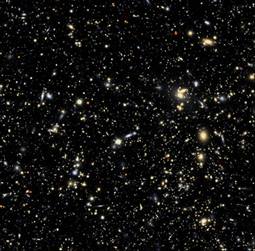Faster, Wider, Deeper: Pick Three
 LSST Corporation
LSST Corporation
Two renderings combine to create this image of the LSST summit facility and Calypso, the small adjacent atmospheric telescope. March 2011.
Every family has a shutterbug, the relative who shows up at events with at least two cameras in hand, who preserves the priceless memories and then posts the least flattering pictures to your Facebook page.
The Large Synoptic Survey Telescope (LSST), which the National Science Board recently approved to advance to its final design stage, brings extreme picture taking to an entirely new level. But instead of personal embarrassment, the LSST will provide incredible scientific benefits.
A planned partnership project between the National Science Foundation (NSF) the Department of Energy's (DOE's) Office of Science and a variety of private donors, the LSST is a proposed 8.4 meter (about 27 ½ feet) wide-field telescope that will be located in Chile and shoot pictures of the entire Southern sky about twice a week. That's the equivalent of taking about 800,000 pictures a night, or 80,000 pictures every hour for a 10-hour night, according to SLAC National Accelerator Laboratory, which is leading the camera design.
The digital camera will be the largest in the world, with some 3.2 billion pixels. Beyond even this high resolution though, the images it captures will be of much higher quality and scientific value than those taken by a typical digital camera. The camera will gather so much data, some 15 terabytes per night, that supercomputers will be needed to process and analyze all that it sees, from inside the solar system to the far reaches of space.
That's what the LSST is designed to do, as (in SLAC's description) the "widest, fastest and deepest" eye of the new digital age." When completed – construction is expected to begin in 2014 and take about five years – the telescope's unprecedented window on the sky will reveal objects near and forces far.
 LSST simulations team
LSST simulations team
The LSST image simulator produces 'end-to-end' image simulations to verify the scientific performance of the complete LSST system design. This color image, a composite of three individual frames with different filters, shows one 4Kx4K CCD (13 x 13 arcminutes of sky) out of 189 CCDs in the LSST focal plane. It corresponds to only 2.6 parts per million of LSST's ultimate sky coverage of 20,000 sq.deg.
Namely, the LSST will show more of the stuff of our solar system such as potentially hazardous near-earth asteroids and the icy objects of the Kuiper Belt. It will create a much more detailed map of the Milky Way. And it will also map more distant objects, such as suddenly exploding stars (supernovae) and the seemingly slow steps of billions of far-flung galaxies across the sky.
In marking those objects and charting them as they move and change, the LSST will shed light on even darker mysteries; dark matter and dark energy. Dark matter seems to be the stuff that is holding everything together – it is thought to make up about 80 percent of all the matter in the universe – but scientists remain largely in the dark on its actual substance. Meantime, dark energy seems to be pushing everything apart, accelerating the expansion of the universe, but scientists still don't know what it actually is (for more detail see Saul Perlmutter Wins Nobel Prize).
They'll get closer to those answers thanks to the LSST. And in seeing our sky with even better eyes, we'll better understand our unique place in space, our responsibilities and our possibilities. That's the LSST, an extreme sky shutterbug, taking priceless images and generating countless scientific smiles.
The Department's Office of Science is the single largest supporter of basic research in the physical sciences in the United States and is working to address some of the most pressing challenges of our time. For more information about SLAC National Accelerator Laboratory, please go to: http://www.slac.stanford.edu/. And for more information on the LSST, please go to http://www.lsst.org/lsst/.
Charles Rousseaux is a Senior Writer in the Office of Science.


